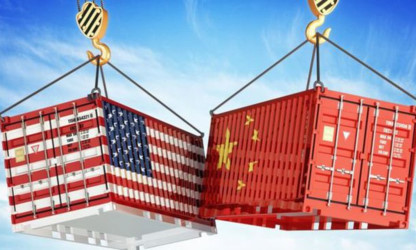Asia and the US-China trade war
Fri, 31 May 2019 23:13:00 | Print | Email Share:
VOV.VN - The annual conference on the Future of Asia is being hosted by the Nikkei Inc in Tokyo from May 30-31. High on the agenda of the conference is the trade war between the US and China and its impacts on Asia.

Vietnamese Deputy Prime Minister Pham Binh Minh is attending the conference with leaders of Japan, the Philippines, Malaysia, Bangladesh, Cambodia, and Laos.
Multidimensional impacts
Trade tensions between the US and China are affecting global economic growth. Retaliatory tariffs on trade between the US and China are creating opportunities for other production centers in Asia. Manufacturers are starting to move their factories out of China, the world’s manufacturing hub in recent years. The US-China trade war is expected to boost production in Asia in the long term.
The number of enterprises moving their factories from China to Vietnam, Cambodia, India, or Indonesia has risen with the increase in retaliatory tariffs. Japan’s Casio watch company said it will move some of its production factories back home or to Thailand to avoid the higher tariffs. Japan’s Ricoh company plans to move its factories to Thailand.
The US’s Steve Madden Footwear company has announced a plan to increase production in Cambodia. Brooks running shoes, Haier washing machines, Jasan socks, Addidas, Puma, New Balance and Fila sportswear are all planning moves to Vietnam.
A survey of the American Chamber of Commerce in China shows that more than 40% of American companies are considering moving or have moved their factories to other countries, mainly in Southeast Asia.
While certain Asian countries will likely benefit from the US-China trade war, other countries once considered “Asian tigers” are likely to suffer. Economies that depend heavily on trade and transit, like Singapore, Hongkong (China), or developed like the Republic of Korea, and Japan will suffer.
High labor costs are accelerating the exodus from China. Supply chains, infrastructure, and land shortages in the less-developed countries are complicating the situation.
Leading role of Japan, ASEAN
The question Asia needs to answer is how can it sustain investment, trade and inclusive growth despite the US-China trade war?
Japan has emerged as the leader of economic integration in Asia. Japan promoted the signing of the Comprehensive and Progressive Trans-Pacific Partnership (CPTPP), the China-Japan-the Republic of Korea Free Trade Agreement, and the Regional Comprehensive Economic Partnership (RCEP) and has taken steps to reduce US pressures in trade negotiations concerning automobile manufacturing and agricultural production.
ASEAN is another driver of regional economic growth. Industrial Revolution 4.0 is changing every aspect of life and ASEAN members are working closely with one another to share technical infrastructure, transfer technology, and seize opportunities from the global supply chain.
By: VOV5/VOV
---------------------------------------------
Same category News :













